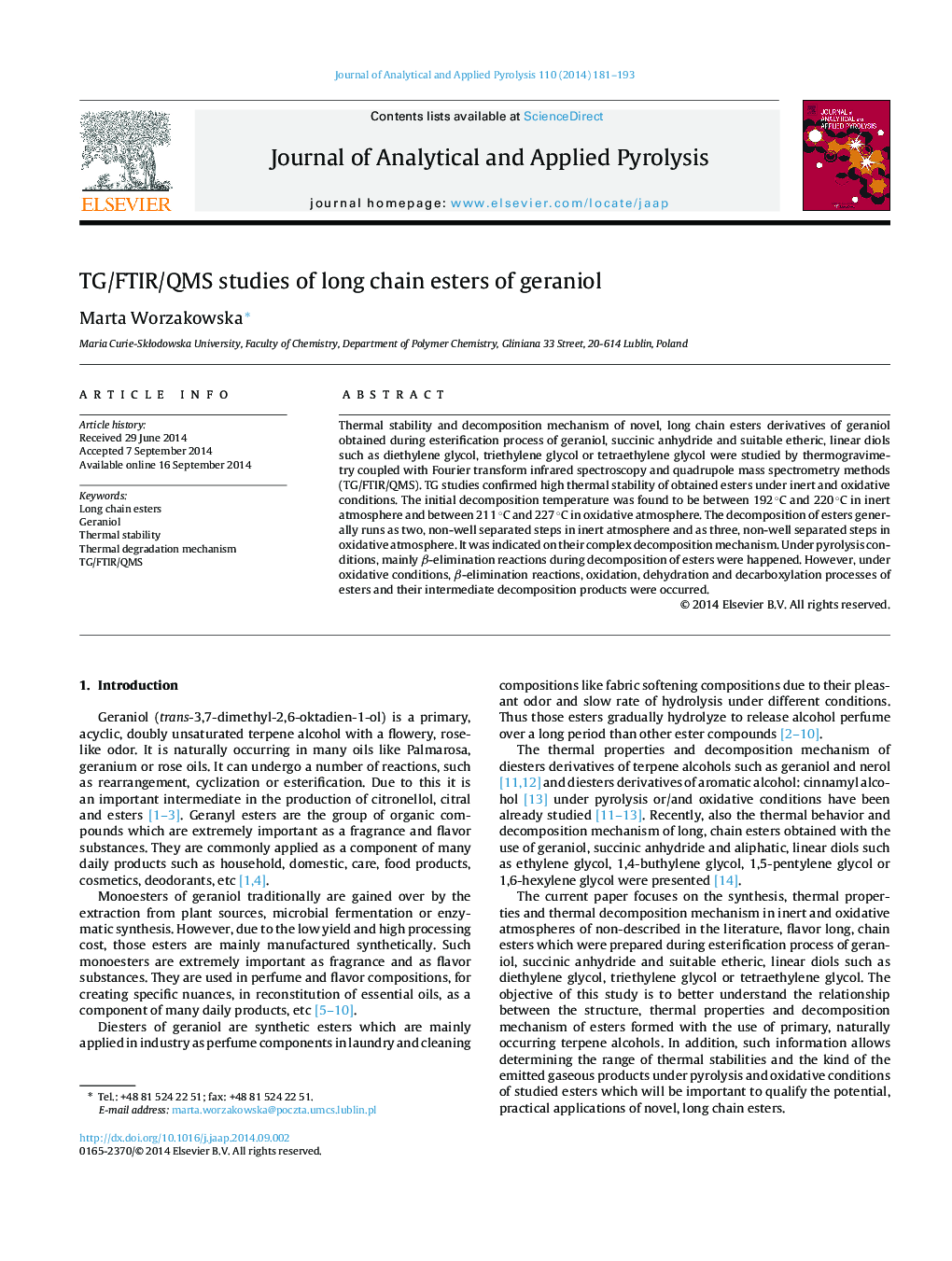| Article ID | Journal | Published Year | Pages | File Type |
|---|---|---|---|---|
| 1197304 | Journal of Analytical and Applied Pyrolysis | 2014 | 13 Pages |
•TG/FTIR/QMS studies of long chain esters of geraniol were presented.•TG analysis confirmed high thermal stability of studied esters.•The decomposition mechanism of esters is complex.•Mainly β-elimination reactions of esters are happened under pyrolysis.•β-Elimination, oxidation, dehydration, decarboxylation of esters are occurred in air.
Thermal stability and decomposition mechanism of novel, long chain esters derivatives of geraniol obtained during esterification process of geraniol, succinic anhydride and suitable etheric, linear diols such as diethylene glycol, triethylene glycol or tetraethylene glycol were studied by thermogravimetry coupled with Fourier transform infrared spectroscopy and quadrupole mass spectrometry methods (TG/FTIR/QMS). TG studies confirmed high thermal stability of obtained esters under inert and oxidative conditions. The initial decomposition temperature was found to be between 192 °C and 220 °C in inert atmosphere and between 211 °C and 227 °C in oxidative atmosphere. The decomposition of esters generally runs as two, non-well separated steps in inert atmosphere and as three, non-well separated steps in oxidative atmosphere. It was indicated on their complex decomposition mechanism. Under pyrolysis conditions, mainly β-elimination reactions during decomposition of esters were happened. However, under oxidative conditions, β-elimination reactions, oxidation, dehydration and decarboxylation processes of esters and their intermediate decomposition products were occurred.
